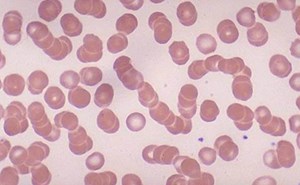
Killing Them Softly: The Impact of Over-Resuscitation in the ED

The use of intravenous (IV) fluids for resuscitation can be traced back to 1831 during a particularly deadly Cholera outbreak in London, when Dr. Thomas Latta first described the momentary revival of a dehydrated woman.1 Since then, IV fluids have become a cornerstone for the resuscitation of the critically ill. The physiologic rationales for fluid resuscitation involve the correction of hypovolemia, as well as augmentation of cardiac output, with the ultimate goal of enhancing tissue perfusion. But to our frequent chagrin, an increase in preload fails to increase cardiac output, and the benefit of additional fluid can be harmful. Unfortunately, it can be frustrating to determine the optimal quantity of resuscitative fluid that a patient may require. A recently implemented core measure mandates a 30 cc/kg fluid bolus for patients with sepsis-induced hypotension or hyperlactatemia, yet some patients may not tolerate this volume. There is minimal evidence on the ideal quantity of resuscitation fluid patients require, and in a fast-paced emergency department (ED), physicians often lack time to properly provide a personalized approach to fluid resuscitation. Herein we review the physiologic impact of fluids, summarize available evidence for fluid resuscitation, and provide salient recommendations relevant to emergency medicine and critical care providers with a focus on the septic patient.
Despite the widespread use of IV fluids, there have been relatively few investigations into the impact of fluid strategies on patient outcomes. For example, the FDA approval of 6% hydroxyethyl starch (HES) occurred in 1972, based on evacuation of less than 400 adults.2 It took over 40 years for well-designed trials to determine that synthetic starches are harmful and place patients at risk for renal injury, coagulopathy and anaphylactic reactions.3 More recently, multi-center randomized trials have evaluated how specific types of intravenous fluids impact patient-centered outcomes. These data suggest crystalloids are now the preferred solution for the initial resuscitation of septic patients over albumin.4,5 Emerging evidence supports our intuition that balanced crystalloid solutions are superior to normal saline in critically ill and ED patients.6,7
Interestingly, while the type of fluid is gaining the well-deserved recognition as a vital component of resuscitation, the necessary volume required has largely been ignored. Following the administration of a fluid bolus, the vast majority is either eliminated by the kidneys or enters the interstitium.8 We classically use Starling’s model to explain interstitial edema formation based on oncotic and hydrostatic pressures. While his work was based on observations of introducing IV saline into the hind limb of a dog, it fails to explain why certain patients develop significant interstitial edema following a fluid administration and others do not. More recently, the discovery of the endothelial glycocalyx has helped us better understand this conundrum. The glycocalyx is a dense matrix layer, approximately 200 – 300 nm thick, that functions as the main barrier to plasma molecules.9 Patients with an intact glycocalyx tend to develop less interstitial edema that those without a glycocalyx. Common reasons for the destruction of the glycocalyx include inflammatory states, such as sepsis, trauma, but hypernatremia and hypervolemia have also been implicated.10
To best appreciate the available literature on the impact of fluid resuscitation, providers should be aware of terms used to precisely describe the volume status of patients. The term fluid accumulation refers to a patient’s cumulative fluid balance divided by baseline body weight. Fluid overload is defined as a greater than 10% fluid accumulation. Hypervolemia signifies an excessive blood volume in which the mean systemic filling pressures are high, that causes fluid accumulation in the interstitium, resulting in edema formation. The impact of fluid overload and hypervolemia are well described, and nearly all organs can be affected. While cardiogenic pulmonary edema is usually the most commonly cited (and feared), the liver, intestines, heart, kidneys, brain, eyes and abdominal wall can all be deleteriously impacted by the overzealous use of fluids.
While it is commonly accepted that a positive fluid balance after initial resuscitation is harmful, there is emerging evidence that overzealous use of IV fluids during resuscitation may have unintended consequences, particularly in septic patients. In the past year, Byrne, et al, presented data on an ovine model of septic shock and compared two resuscitation strategies: one with protocolized use of vasoactive medications for hypotension, and another with an initial bolus of 40 cc/kg of normal saline followed by use of vasoactive medications. Interestingly, the group that did not receive initial resuscitation with fluids had lower pressor requirements, lower serum lactate values, and less evidence of glycocalyx breakdown.11 A large retrospective study of over 23,000 patients with severe sepsis and septic shock evaluated the impact of the quantity of IV fluid administered on the day of admission on hospital mortality.12 The authors discovered that patients with septic shock who received lower quantities of crystalloid resuscitation (1-4.99 L) had a significant reduction in mortality when compared to patients with high-volume fluid resuscitation. And for each liter administered above the fifth, patients faced a 2.3% increase in mortality. Perhaps the most intriguing evidence that initial over-resuscitation with IV fluids is harmful comes from one of the few randomized trials evaluating the impact of early fluid boluses in the resuscitation of febrile children with evidence of poor perfusion.13 The FEAST (Fluid Expansion As Supportive Therapy) trial was conducted in sub-Saharan Africa and included children between 2 months and 12 years who were randomized to one of the three groups: initial resuscitation with a 20 ml/kg bolus of albumin, initial resuscitation with a 20 ml/kg saline bolus, or no bolus but maintenance fluids. This study was stopped early after the enrollment of 3141 patients, as interim analysis showed that subjects in the groups who received boluses had a 3.3% higher chance of death at 48 hours and a 4% higher rate of death or neurologic sequelae at four weeks. Finally, a large analysis of data reported from the New York State Department of Health evaluated the impact of a mandated sepsis bundle on in-hospital mortality.14 While the authors found that completion of the sepsis bundle (blood cultures, broad-spectrum antibiotics, lactate measurement and administration of a 30 cc/kg fluid bolus) was associated with a small, but significant improvement in mortality, completion of a 30 cc/kg fluid bolus alone did not have an impact on mortality.
The CLOVERS (Crystalloid Liberal or Vasopressors Early Resuscitation in Sepsis, ClinicalTrials.gov Identifier: NCT03434028) is a currently ongoing multi-center randomized study that seeks to identify if a restrictive fluid strategy improves mortality for patients with sepsis-induced hypotension when compared to a liberal fluid resuscitation trial. This will hopefully provide much desired evidence to providers to help determine the ideal resuscitation strategy for septic patients.
Of course, our fundamental question remains: what is the ideal approach to fluid resuscitation for this patient in front of me? While the effects of over-resuscitation have been described above, under-resuscitation results in low cardiac output and organ dysfunction, which is clearly harmful. The rationale for a personalized approach is logical, albeit more time consuming; but it is arguably the most beneficial for the critically ill regardless of location in the ED or ICU. The concept of “fluid responsiveness”, defined as an increase in stroke volume or cardiac output in responsive to a bolus, can help to identify which patients may benefit from additional crystalloid resuscitation. However, determining which patients are fluid responsive can be challenging. Static measurements (inferior vena cava size, central venous pressure, pulmonary capillary wedge pressure, etc.) are frequently used over more sensitive and specific dynamic measurements (stroke volume variation, pulse pressure variation, passive leg raise, etc.) for determining volume status.15 Placement of an arterial line or use of point-of-care echocardiogram to assist in a passive leg raise or determination of pulse pressure variation in an intubated patient are perhaps some of the best methods available to ED providers. Additional research is indicated to determine specific patient populations that may need more or less than recommended fluid boluses. Ultimately, a reliance on physiologic parameters may be what best serves our sickest patients to determine the ideal quantity of fluid these patients require over relatively rigid guidelines.
References
- Foëx BA. How the cholera epidemic of 1831 resulted in a new technique for fluid resuscitation. Emerg Med J. 2003 Jul;20(4):316-8.
- Wiedermann CJ, Eisendle K. Comparison of hydroxyethyl starch regulatory summaries from the Food and Drug Administration and the European Medicines Agency. J Pharm Policy Pract. 2017 Mar 21;10(1):12.
- Mitra S, Khandelwal P. Are all colloids same? How to select the right colloid? Indian J Anaesth. 2009 Oct;53(5):592-607.
- Caironi P, Tognoni G, Masson S, et al. Albumin replacement in patients with severe sepsis or septic shock. N Engl J Med. 2014 Apr 10;370(15):1412-21.
- Finfer S, Bellomo R, Boyce N, et al. A comparison of albumin and saline for fluid resuscitation in the intensive care unit. N Engl J Med. 2004 May 27;350(22):2247-56.
- Semler MW, Self WH, Wanderer JP, et al. Balanced crystalloids versus saline in critically ill adults. N Engl J Med. 2018 Mar 1;378(9):829-39.
- Semler MW, Wanderer JP, Ehrenfeld JM, et al. Balanced crystalloids versus saline in the intensive care unit. The SALT randomized trial. Am J Respir Crit Care Med. 2017 May 15;195(10):1362-72.
- Malbrain ML, Van Regenmortel N, Saugel B, et al. Principles of fluid management and stewardship in septic shock: it is time to consider the four D’s and the four phases of fluid therapy. Ann Intensive Care. 2018 May 22;8(1):66.
- Curry FE. Layer upon layer: the functional consequences of disrupting the glycocalyx-endothelial barrier in vivo and in vitro. Cardiovasc Res. 2017 May 1;113(6):559-61.
- Chappell D, Bruegger D, Potzel J, et al. Hypervolemia increases release of atrial natriuretic peptide and shedding of the endothelial glycocalyx. Crit Care. 2014 Oct 13;18(5):538.
- Byrne L, Obonyo NG, Diab SD, et al. Unintended consequences: fluid resuscitation worsens shock in an ovine model of endotoxemia. Am J Respir Crit Care Med. 2018 Oct 15;198(8):1043-54.
- Marik PE, Linde-Zwirble WT, Bittner EA, et al. Fluid administration in severe sepsis and septic shock, patterns and outcomes: an analysis of a large national database. Intensive Care Med. 2017 May;43(5):625-32.
- Maitland K, Kiguli S, Opoka RO, et al. Mortality after fluid bolus in African children with severe infection. N Engl J Med. 2011 Jun 30;364(26):2483-95.
- Seymour CW, Gesten F, Prescott HC, et al. Time to treatment and mortality during mandated emergency care for sepsis. N Engl J Med. 2017 Jun 8;376(23):2235-44.
- Cecconi M, Hofer C, Teboul JL, et al. Fluid challenges in intensive care: the FENICE study. Intensive Care Med. 2015 Sep 1;41(9):1529-37.
Gabriel Wardi, MD, MPH



